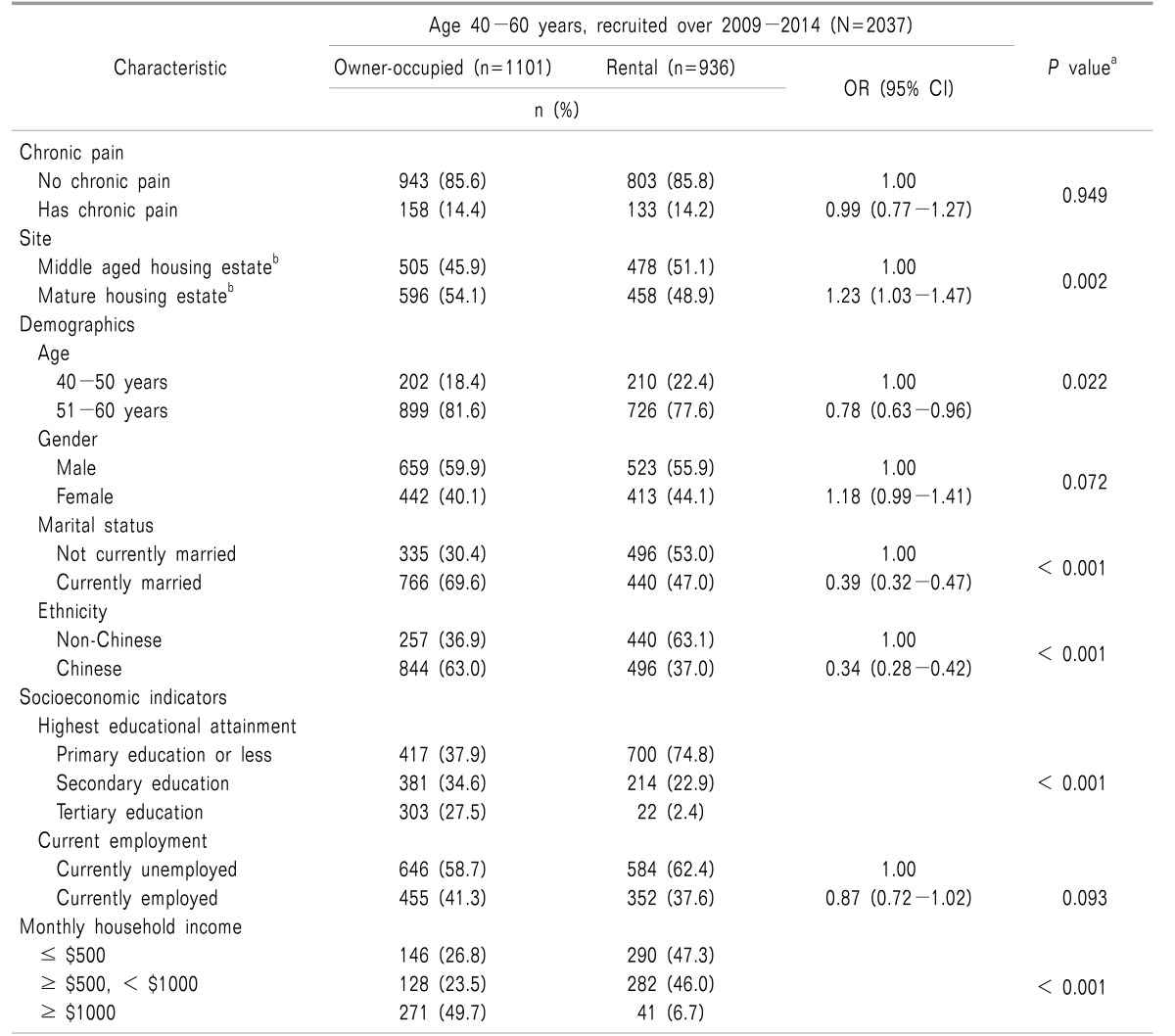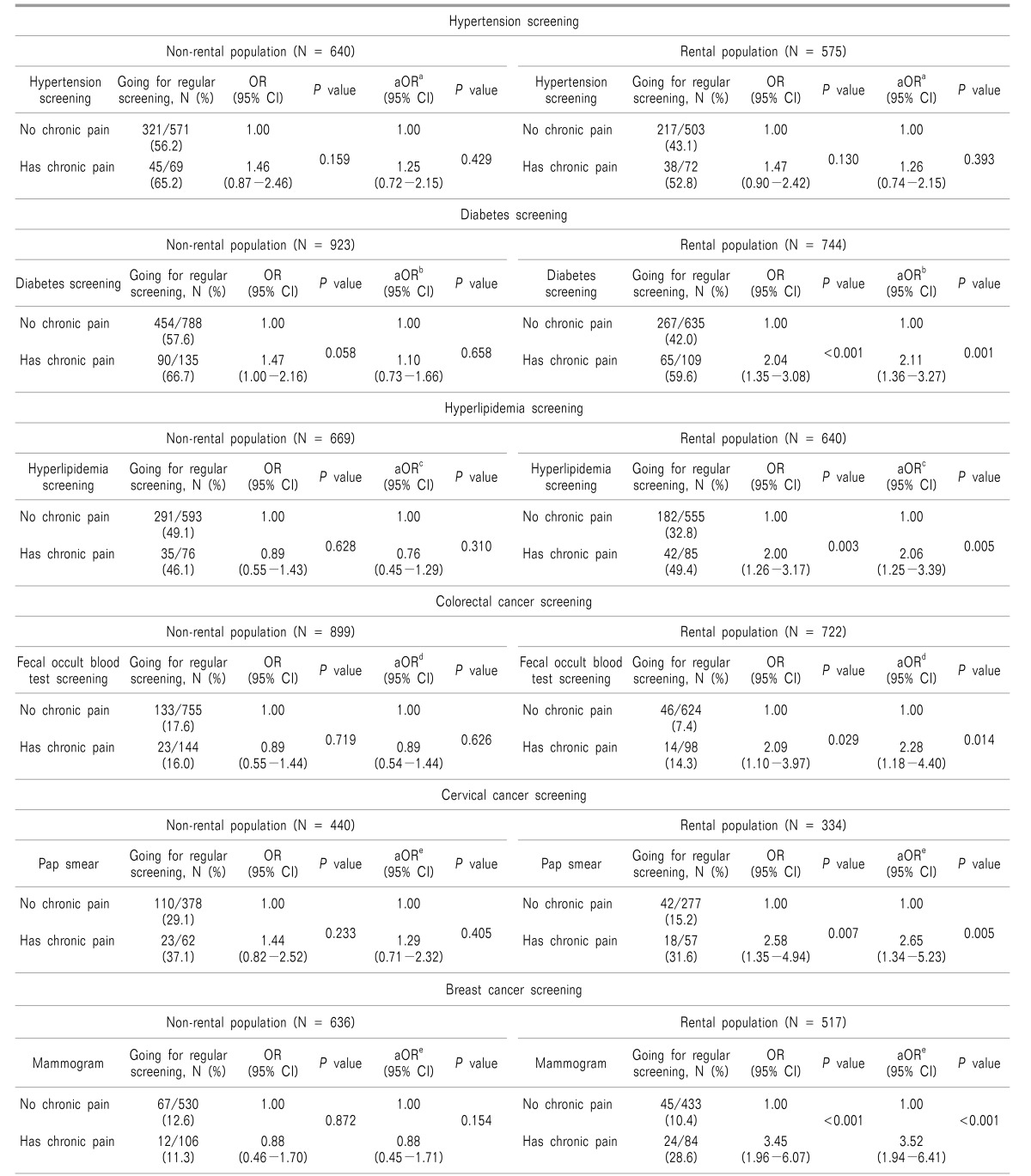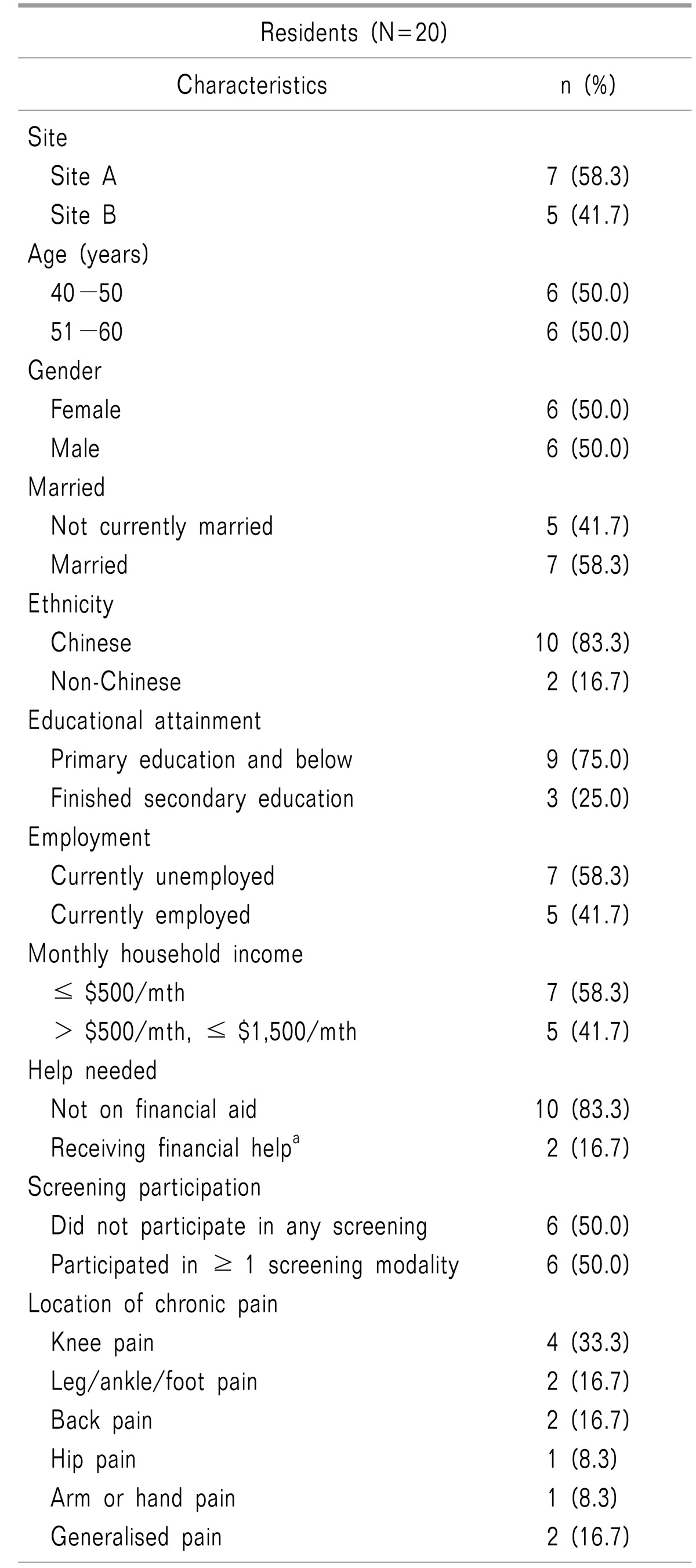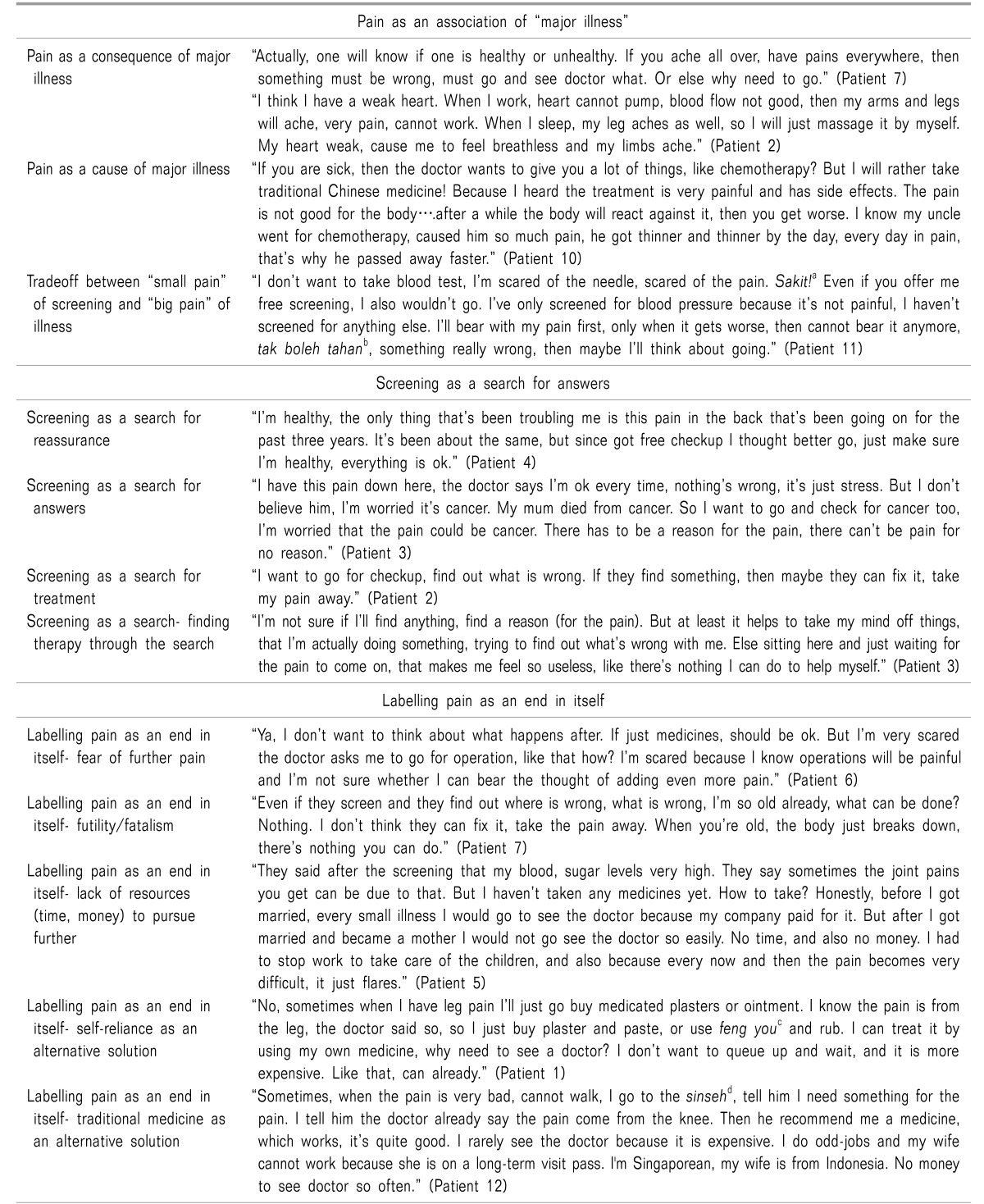1. Azevedo LF, Costa-Pereira A, Mendonça L, Dias CC, Castro-Lopes JM. The economic impact of chronic pain: a nationwide population-based cost-of-illness study in Portugal. Eur J Health Econ. 2016; 17:87–98. PMID:
25416319.

2. Cornally N, McCarthy G. Help-seeking behaviour for the treatment of chronic pain. Br J Community Nurs. 2011; 16:90–98. PMID:
21378675.

3. Thorstensson CA, Gooberman-Hill R, Adamson J, Williams S, Dieppe P. Help-seeking behaviour among people living with chronic hip or knee pain in the community. BMC Musculoskelet Disord. 2009; 10:153. PMID:
19968876.

4. Azevedo LF, Costa-Pereira A, Mendonça L, Dias CC, Castro-Lopes JM. Chronic pain and health services utilization: is there overuse of diagnostic tests and inequalities in nonpharmacologic treatment methods utilization? Med Care. 2013; 51:859–869. PMID:
23969588.
5. Michaëlis C, Kristiansen M, Norredam M. Quality of life and coping strategies among immigrant women living with pain in Denmark: a qualitative study. BMJ Open. 2015; 5:e008075.

6. Seery MD, Leo RJ, Holman EA, Silver RC. Lifetime exposure to adversity predicts functional impairment and healthcare utilization among individuals with chronic back pain. Pain. 2010; 150:507–515. PMID:
20594645.

7. Riskowski JL. Associations of socioeconomic position and pain prevalence in the United States: findings from the National Health and Nutrition Examination Survey. Pain Med. 2014; 15:1508–1521. PMID:
25138172.

8. Cabral DM, Bracher ES, Depintor JD, Eluf-Neto J. Chronic pain prevalence and associated factors in a segment of the population of São Paulo City. J Pain. 2014; 15:1081–1091. PMID:
25038400.
9. Eachus J, Chan P, Pearson N, Propper C, Davey Smith G. An additional dimension to health inequalities: disease severity and socioeconomic position. J Epidemiol Community Health. 1999; 53:603–611. PMID:
10616672.

10. Urwin M, Symmons D, Allison T, Brammah T, Busby H, Roxby M, et al. Estimating the burden of musculoskeletal disorders in the community: the comparative prevalence of symptoms at different anatomical sites, and the relation to social deprivation. Ann Rheum Dis. 1998; 57:649–655. PMID:
9924205.

11. Bonathan C, Hearn L, Williams AC. Socioeconomic status and the course and consequences of chronic pain. Pain Manag. 2013; 3:159–162. PMID:
24654756.

12. Yeo SN, Tay KH. Pain prevalence in Singapore. Ann Acad Med Singapore. 2009; 38:937–942. PMID:
19956814.
13. Leung YY, Teo SL, Chua MB, Raman P, Liu C, Chan A. Living arrangements, social networks and onset or progression of pain among older adults in Singapore. Geriatr Gerontol Int. 2016; 16:693–700. PMID:
26081796.

17. Liang En W, Sin D, Wen Qi C, Zong Chen L, Shibli S, Choon-Huat Koh G. Chronic pain in a low socioeconomic status population in Singapore: a cross-sectional study. Pain Med. 2016; pnv115. PMID:
26893120.

18. Liang En W, Koh GC, Lim VK. Caring for underserved patients through neighborhood health screening: outcomes of a longitudinal, interprofessional, student-run home visit program in Singapore. Acad Med. 2011; 86:829–839. PMID:
21617510.

19. Wee LE, Lim LY, Shen T, Lee EY, Chia YH, Tan AY, et al. Choice of primary health care source in an urbanized low-income community in Singapore: a mixed-methods study. Fam Pract. 2014; 31:81–91. PMID:
24253204.

20. Miles MB. Huberman AM, editor. Qualitative data analysis: an expanded sourcebook. 2nd ed. Thousand Oaks (CA): SAGE;1994. p. 100–105.
22. Stubbs B, Patchay S, Soundy A, Schofield P. The avoidance of activities due to fear of falling contributes to sedentary behavior among community-dwelling older adults with chronic musculoskeletal pain: a multisite observational study. Pain Med. 2014; 15:1861–1871. PMID:
25224385.

23. Larsson ME, Nordholm LA. Responsibility for managing musculoskeletal disorders--a cross-sectional postal survey of attitudes. BMC Musculoskelet Disord. 2008; 9:110. PMID:
18681967.
24. Christensen U, Schmidt L, Hougaard CØ, Kriegbaum M, Holstein BE. Socioeconomic position and variations in coping strategies in musculoskeletal pain: a cross-sectional study of 1,287 40- and 50-year-old men and women. J Rehabil Med. 2006; 38:316–321. PMID:
16931462.

25. Brekke M, Hjortdahl P, Kvien TK. Severity of musculoskeletal pain: relations to socioeconomic inequality. Soc Sci Med. 2002; 54:221–228. PMID:
11824927.

26. Tsai YF, Liu LL, Chung SC. Pain prevalence, experiences, and self-care management strategies among the community-dwelling elderly in Taiwan. J Pain Symptom Manage. 2010; 40:575–581. PMID:
20678896.

27. Yang SY, Bogosian A, Moss-Morris R, McCracken LM. Mixed experiences and perceptions of psychological treatment for chronic pain in singapore: skepticism, ambivalence, satisfaction, and potential. Pain Med. 2015; 16:1290–1300. PMID:
25800777.

28. Clarke A, Martin D, Jones D, Schofield P, Anthony G, McNamee P, et al. “I try and smile, I try and be cheery, I try not to be pushy. I try to say ‘I'm here for help’ but I leave feeling worried”: a qualitative study of perceptions of interactions with health professionals by community-based older adults with chronic pain. PLoS One. 2014; 9:e105450. PMID:
25187952.

29. Dima A, Lewith GT, Little P, Moss-Morris R, Foster NE, Bishop FL. Identifying patients' beliefs about treatments for chronic low back pain in primary care: a focus group study. Br J Gen Pract. 2013; 63:e490–e498. PMID:
23834886.

30. Tan MG, Win MT, Khan SA. The use of complementary and alternative medicine in chronic pain patients in Singapore: a single-centre study. Ann Acad Med Singapore. 2013; 42:133–137. PMID:
23604502.
31. Zarei S, Bigizadeh S, Pourahmadi M, Ghobadifar MA. Chronic pain and its determinants: a population-based study in Southern Iran. Korean J Pain. 2012; 25:245–253. PMID:
23091685.








 PDF
PDF Citation
Citation Print
Print



 XML Download
XML Download